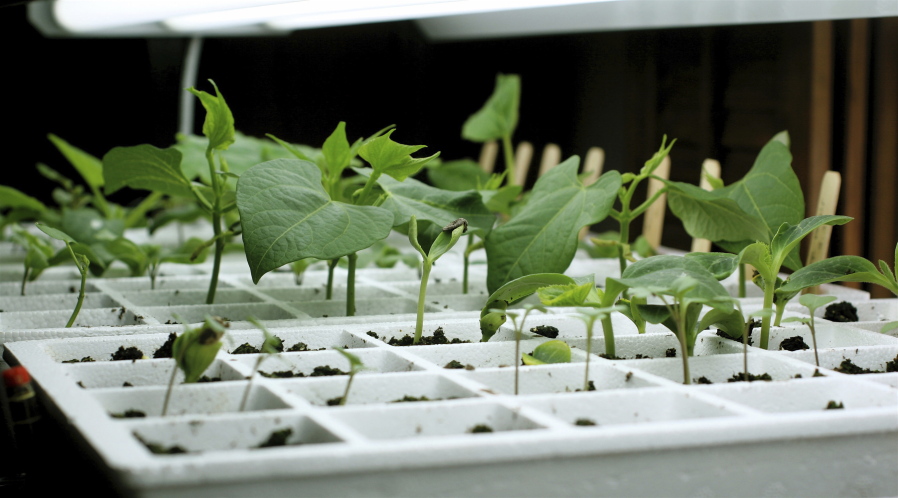There’s no reason to stop growing vegetables just because cold weather has arrived. Sun-loving edibles can be cultivated indoors in containers enriched by supplemental LED lights.
But choose the right plant combinations for this four-season gardening. Some plants are more demanding than others.
“The amount of money and work it takes depends upon your expectations,” said Tuan Bettes, a horticulture agent with Utah State University Extension. “You won’t achieve (indoors) what you would in sunlight.”
Lettuces, leafy greens, sprouted seeds, radishes, carrots and herbs are among the easiest plants to grow indoors in winter. They tolerate cooler temperatures and limited light. They also mature quickly, and many, like chives and parsley, don’t grow tall.
Small fruited or dwarf varieties of tomatoes and peppers also will produce in basement gardens when exposed to the proper lighting. Be prepared to help pollinate your tomato plants, though. Shake them occasionally to release the pollen.
Help avoid plant pests by segregating vegetable containers from houseplants.
“Never put patio plants next to vegetables,” Bettes said. “That’s a good way to introduce aphids and scale insects.”
Many people take the hydroponic approach to indoor gardening by designing their own systems or by buying any number of high-tech soil-free containers with full-spectrum grow lights attached.
Plants grow naturally and faster — up to five times faster — in the ideal climate created by water reservoirs and LED lighting systems, said Ben Gill, a spokesman for AeroGro International Inc., manufacturers of a line of indoor gardens in Boulder, Colo.
“There’s no dirt,” Gill said. “That makes it a clean way to grow on benches or countertops.”
Many of these small hydroponic growing kits can be had in a single package: container, lights, nutrients and pre-seeded plant pods. “They’re one-stop shopping,” Gill said. “Just add water and you’ve got everything you need to start.”
LED grow lighting has come a long way in a short time.
“They’ve quickly become our best-selling items,” Gill said. “They take less energy to run, grow plants better and you don’t have to change them (lights) as frequently — once every three to five years instead of every three to five months.”
Some hydro kits are designed to mix the LED light spectrum to fit growing conditions. That means using daylight white LEDs for fast growth, blue LEDs for larger yields, and red LEDs for more fruit or flowers.
“You can literally start a Christmas tree — a 16-inch spruce — in your AeroKit and then transplant it,” Gill said. “You can start your outdoor garden indoors and extend your growing seasons.”



